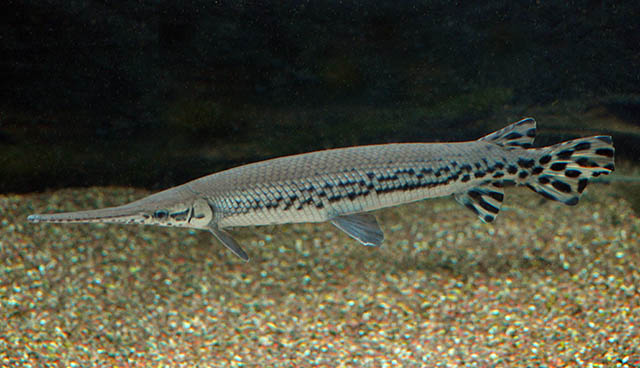| Lepisosteidae (Gars) |
| 200 cm TL (male/unsexed); max.weight: 23 kg; max. reported age: 36 years |
|
demersal; pH range: 7 - 25; dH range: 10 - 15; depth range - 0 m |
| North and Central America: along the coasts and inland from Quebec to northern Mexico. |
|
Dorsal spines (total): 0-0; Dorsal soft rays (total): 6-9; Anal spines: 0-0; Anal soft rays: 8-10. Long narrow snout. Olivaceous brown above and white below. Dark spots on median fins and on body (Ref. 37032). Scales ganoid: thin bony scutes on leading edges of unpaired fins, and on both edges of caudal fin (Ref. 4639). |
| Adults occur in sluggish pools, backwaters and oxbows of medium to large rivers, and lakes (Ref. 10294). Usually found near vegetation. Occasionally found in brackish waters. Spawning occur in freshwater and possibly slightly brackish water (Ref. 4639). Migrate up rivers during the spawning season (Ref. 4639). Eggs and larvae are demersal and adhesive (Ref. 4639). Voracious predator, feeding on various fishes and crustaceans. The roe is poisonous. |
|
(Ref. 96402)
|
| other |
|
Source and more info: www.fishbase.org. For personal, classroom, and other internal use only. Not for publication.
Page created by Jen, 05.08.02,
php script by kbanasihan 06/09/2010 ,
last modified by
dsantos, 20/08/10

